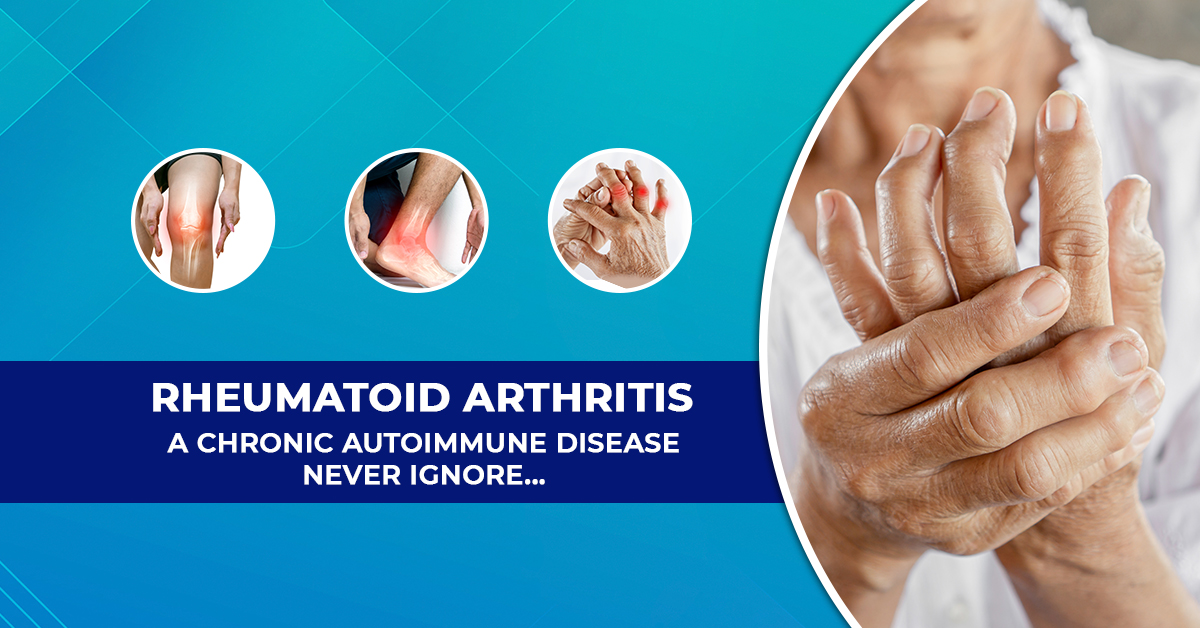Hetero Healthcare
11 Oct 2021

Rheumatoid Arthritis is a progressive chronic autoimmune disorder causing inflammation in joints, hands, legs, etc., and results in painful deformity and immobility, especially in fingers, wrists, feet, and ankles, the immunity attacks the healthy tissues of the body and damages a wide variety of body systems like skin, lungs, heart, and blood vessels. In severe cases, RA causes painful swelling in organs. If the inflammation with Rheumatoid Arthritis exists for a long time, it may cause bone erosion and joint deformity.
Here are a few early signs of rheumatoid arthritis in our body.
Symptoms of Rheumatoid Arthritis vary from person to person, and the symptoms change from day to day. Intensified attacks of the immune on the healthy tissue of our body are called flare-ups and inactive periods, and in case of less noticeable symptoms, it is called remission.
In the case of RA, your immune system mistakenly sends the antibodies to the lining of your joints and attack the tissues around the joints, and the thin layer of the cells (synovium) that cover the joints become sore and inflamed, that releases the chemicals which damage the
Your genetics is a significant risk factor for rheumatoid arthritis. It is because of variants in human leukocyte antigen (HLA) genes, especially the HLA-DRB1 gene. HLA genes produces the protein that distinguishes the proteins produced by the body and proteins produced by the foreign invaders (viruses and bacteria).
It is seen more in women than men. Research say hormonal imbalance causes the chronic disorder though this finding is practically not proved.
As few shreds of evidence prove smoking has increased the risk of evolving Rheumatic Arthritis.
The RA type is identified by the presence and absence of an autoantibody or protein produced by the body that attacks the immune system, referred to as the rheumatoid factor.
There are four distinct stages of RA determined based on radiologic findings and disease progression.
Four stages are:
Experts or researchers have not yet ruled out the actual reason for the cause of Rheumatoid Arthritis.
However, the below factors trigger RA:
If your RA is worsening, your joints will shout out of pain and increases swelling. There are a few non-joint symptoms that worsens RA.
There is no cure for RA, but treatment in the early stages and proper lifestyle can reduce the chances of RA and risk of joint damage:
The medications depend on the severity and longevity of your symptoms:
Here are a few tips to stay away or reduce the risk and progression of RA in your body:
Despite of many studies on how RA develops in the body, it is still unclear whether these autoantibodies could contribute to disease pathogenesis. However, studies are being conducted on genetic and environmental risk factors for a better understanding and prevention of RA.
References
Hetero Healthcare

Hetero Healthcare27 May 2024
The Thyroid: Understanding Your Body's Master Gland
The thyroid gland, a small butterfly-shaped gland located at the base of your neck, plays a critical role in regulating your metabolism.

Hetero Healthcare25 May 2024
Taking Control of Your Breath: Understanding and Managing Asthma
Asthma can feel like a constant battle for air, leaving you breathless and wheezing. But with knowledge and the right approach, you can take control of your asthma and live a full, active life.

Hetero Healthcare30 Apr 2024
A Comprehensive Guide to Malaria
Malaria, a mosquito-borne infectious disease, continues to pose a significant threat to global health. At Hetero Healthcare, we are committed to raising awareness about this preventable illness and empowering individuals with knowledge to protect themselves. This comprehensive blog delves into the causes, symptoms, and effective prevention strategies for malaria.

Hetero Healthcare30 Apr 2024
A Guide to Parkinsons Disease for Patients and Caregivers
At Hetero Healthcare, we understand the profound impact Parkinson's disease (PD) can have on individuals and their loved ones.